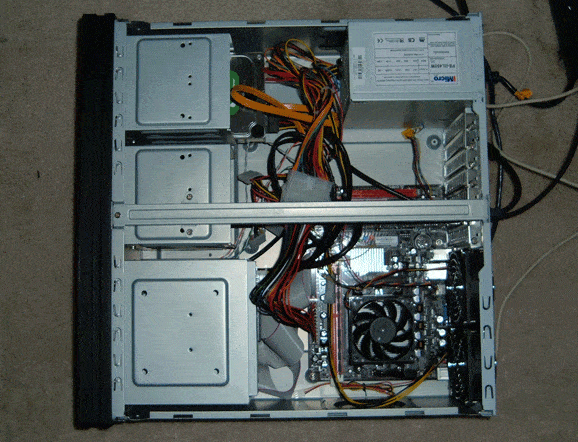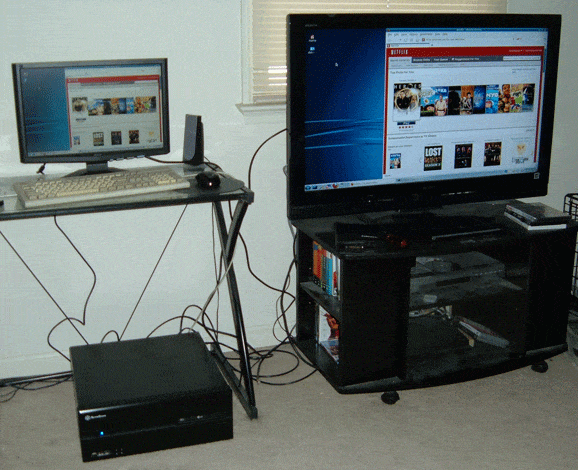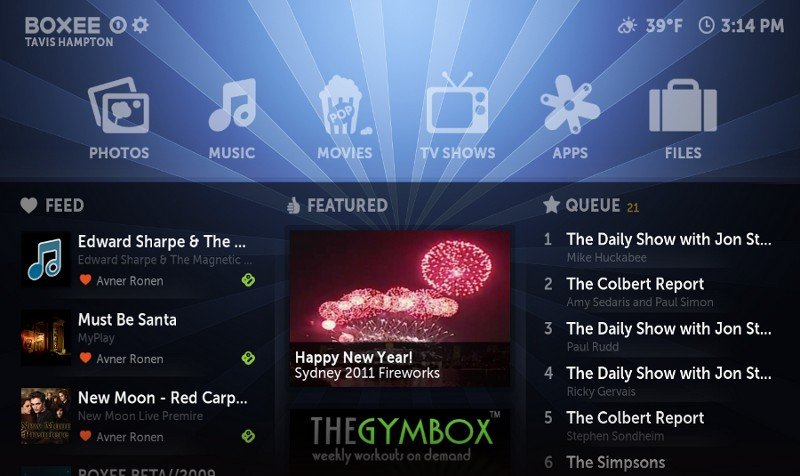Do you like watching television and movies online, but you hate watching them on a computer screen? Do you have a huge DVD library but find it inconvenient to dig through them when you want to find something to watch? Would you like to listen to your favorite music through the surround sound attached to your TV? If you answered “yes” to any of these questions, you might be an ideal candidate for a simple home media center.
What is a media center (and why would you want one)?
A media center is basically just a computer that is constantly hooked up to your television. You use it to serve up media files or access media content online that you can view or listen to through your TV and other elements of your existing entertainment center (like the surround sound option mentioned earlier).
Why would you want a home media center? Here are a few things you can do with one:
- Back up your current DVD collection to the hard drives. Then you can sort the files by genre, name, or anything you’d like and never have to dig through discs again.
- Watch online video (such as through Netflix or Hulu).
- You can even include a DVD or Blu-ray player in the media center to watch discs that you rent or borrow.
- Put all of your music on one system that can hook up to your surround sound so you can listen to your favorite tracks and playlists easily at home.
- Store your digital photo collections on the media center and show them off to friends and family that come by for a visit.
Why not just use your existing family computer or laptop for this? It mostly comes down to convenience. With a media center you don’t have to fumble around with cables, or lugging your laptop back and forth all the time. You can keep your computers in one room (like a home office) and have a media center permanently set up in your living room or family room where you tend to consume most of your media.
There’s also an issue of space. While a laptop may be a good portable solution as an extremely simple media center, it likely won’t have the hard drive space to hold an extensive video collection. Another consideration is that with a media center you don’t have to constantly adjust your monitor settings from computer screen to television screen, especially if you want to be able to work on your computer while using the media center at the same time.
What do you need to build a simple media center?
Now let’s talk about what you need to set up your own simple home media center. But be forewarned, you should only attempt to build your own media center if you know a thing or two about the inner workings of a computer. If you’re less tech-savvy, we’ll talk about another option for you soon.
A software developer I know recently put together his own simple media center. I asked him what basic components you would need to do the same. Here’s an internal shot of his media center and his suggested component list:

- A computer case — Make sure the size will work for you (if you want it to fit within your entertainment center for example, you may need to get a case that works well
horizontally rather than only in tower format). - Motherboard
- CPU
- Hard drive(s) — Make sure your hard drives have enough space for what you want to do. For example, backing up a large DVD collection would require much more substantial hard drive space than a media center for photos or music alone, or one designed to let you easily stream online videos.
- Video card
- CPU fan
- A TV tuner if you plan to use the system as a DVR to record television shows to watch them later
- A DVD player, DVD writer, and / or Blu-ray player depending on your preferences
- A PC remote control or special mouse — This should be wireless and not require a solid surface to use it. It enables you to control your media center from your couch without a traditional mouse and keyboard. Make sure this works with your operating system.
- Cables to hook your media center to your television (with HDTVs you can usually use a single HDMI cable for this)
You may be able to get some of these components together in kit form. And don’t forget about software. The developer I interviewed suggests using Linux if you want to build a relatively inexpensive media center, although Windows operating systems will also work. Other than that, you’ll need a media player. You can use different ones for different media types (such as using VLC for videos) or you can use an option like Moovida which allows you to control video, audio, and photos all from one place. Some media players are freely available and others require payment for more features. Make sure the media player you choose is compatible with the operating system you install.
When all was said and done, here’s the system he ended up with. Note that you do not have to include a computer monitor. Your TV is the only monitor you need. In this photo he hadn’t yet installed the media center into his entertainment center, but you’ll notice he chose a case size that will fit in his existing entertainment center / TV stand. If you want yours to be out of the way, you should keep those size constraints in mind when you choose your own case.

What if you can’t (or don’t want to) build your own media center?
There’s a simple solution for you if you’re in this group too. Just use a separate pre-assembled computer or laptop. If you want the benefits mentioned above you just have to keep a few considerations in mind. For example, the case size would still need to fit in your entertainment center or wherever you want to keep the system. You would also have to make sure it has enough hard drive space, especially if you intend to back up your traditional media there. In that case a laptop is probably not your best option. This can be an ideal option if you’re looking for an out-of-the-box solution or if you have an older computer sitting around, not being used anymore, and the specs are still decent enough that it would fit the bill.
Did you build your own media center? Did you adapt a ready-made system for the task? Share your stories and tips in the comments below letting others interested in building a media center know what kinds of benefits and challenges they may come across.


Great idea!! Dual display may help…
ok we have build many media center for our customers. and we have noticed that you need ssd drive for boot and at least 8gig of ram. check out the one we did.